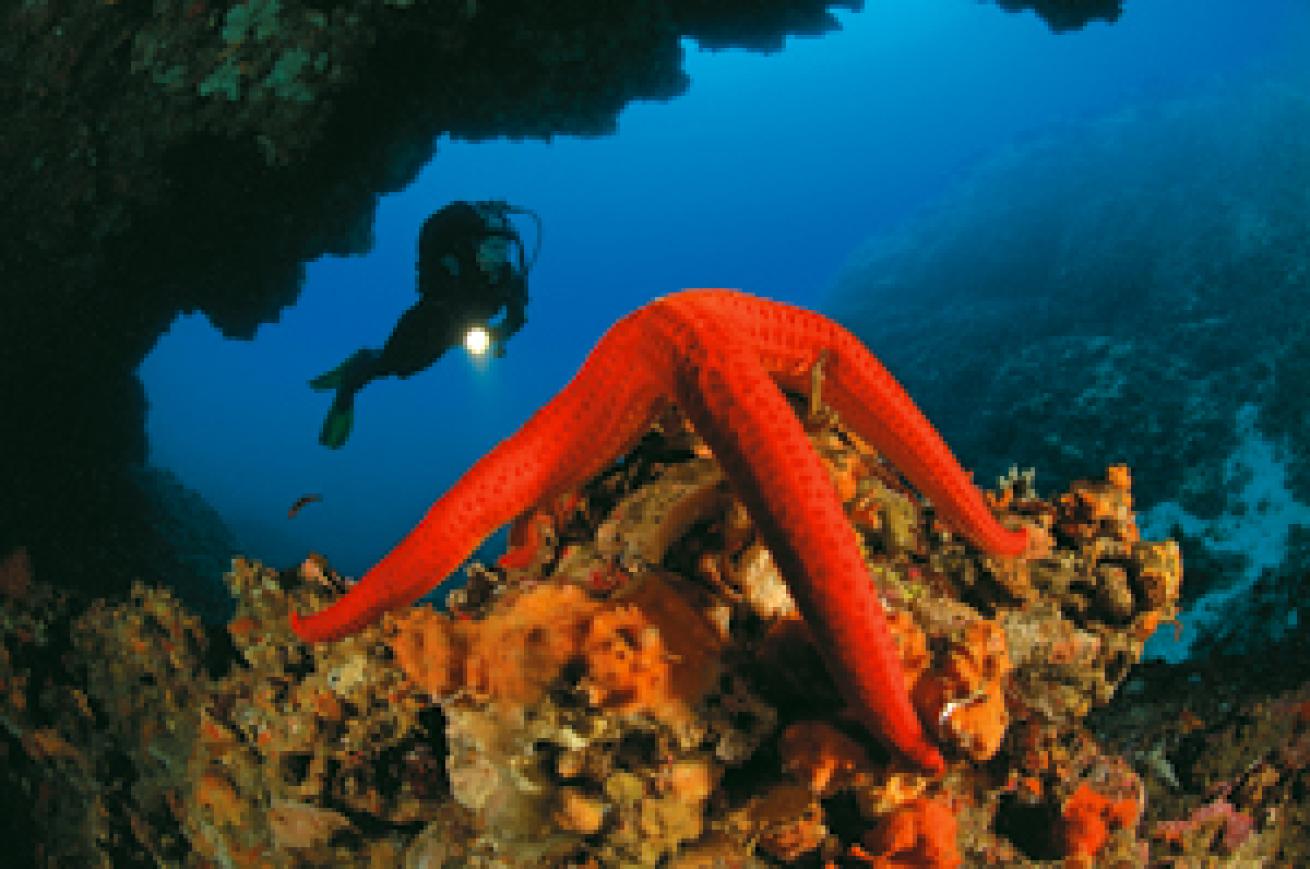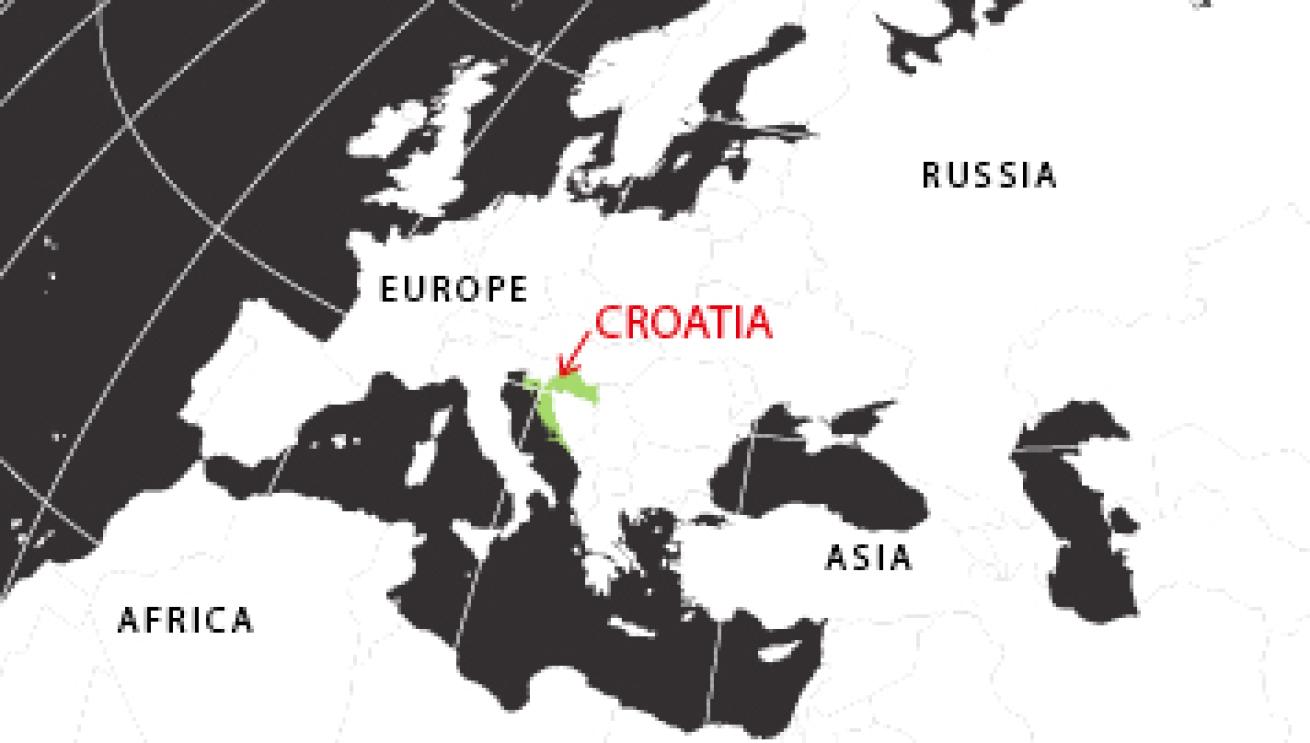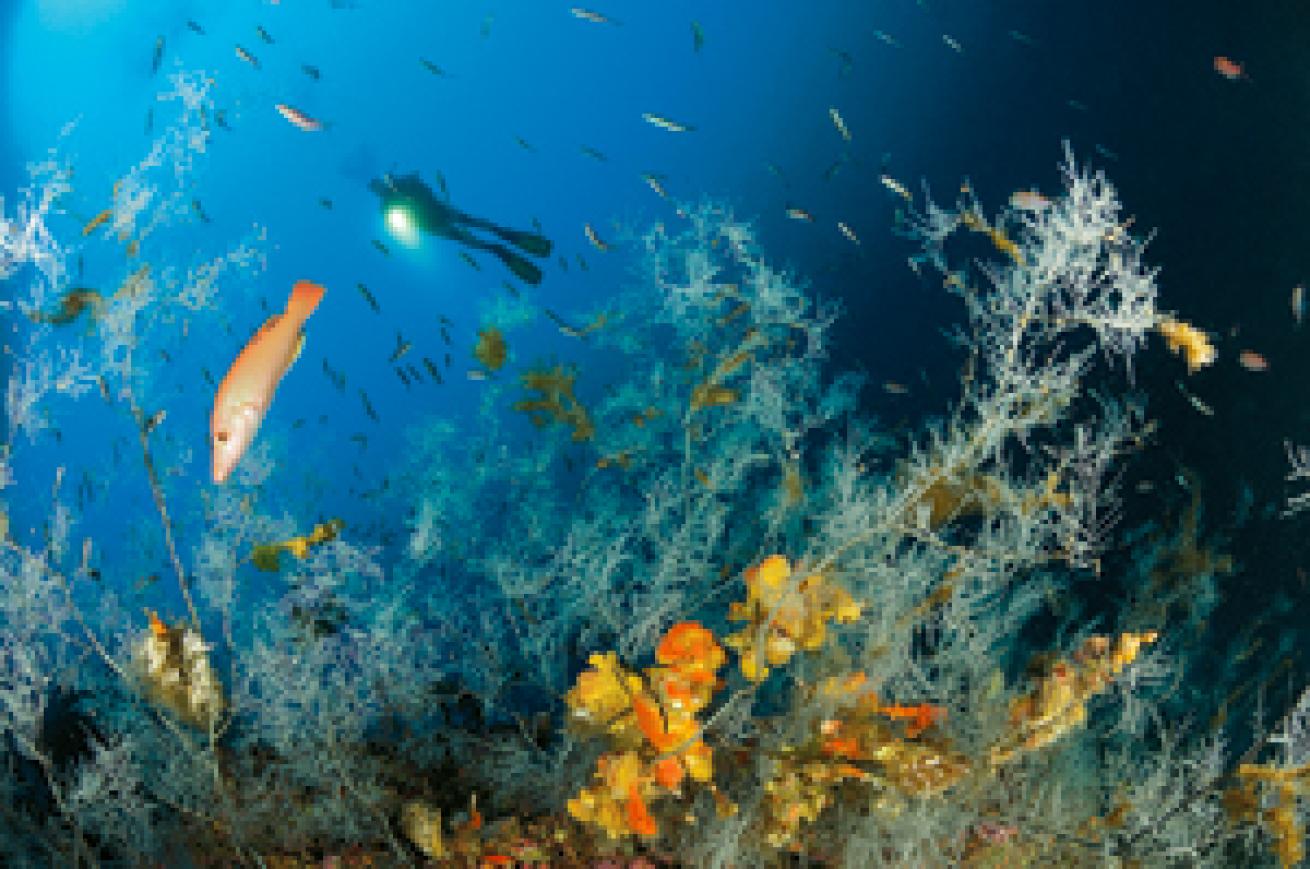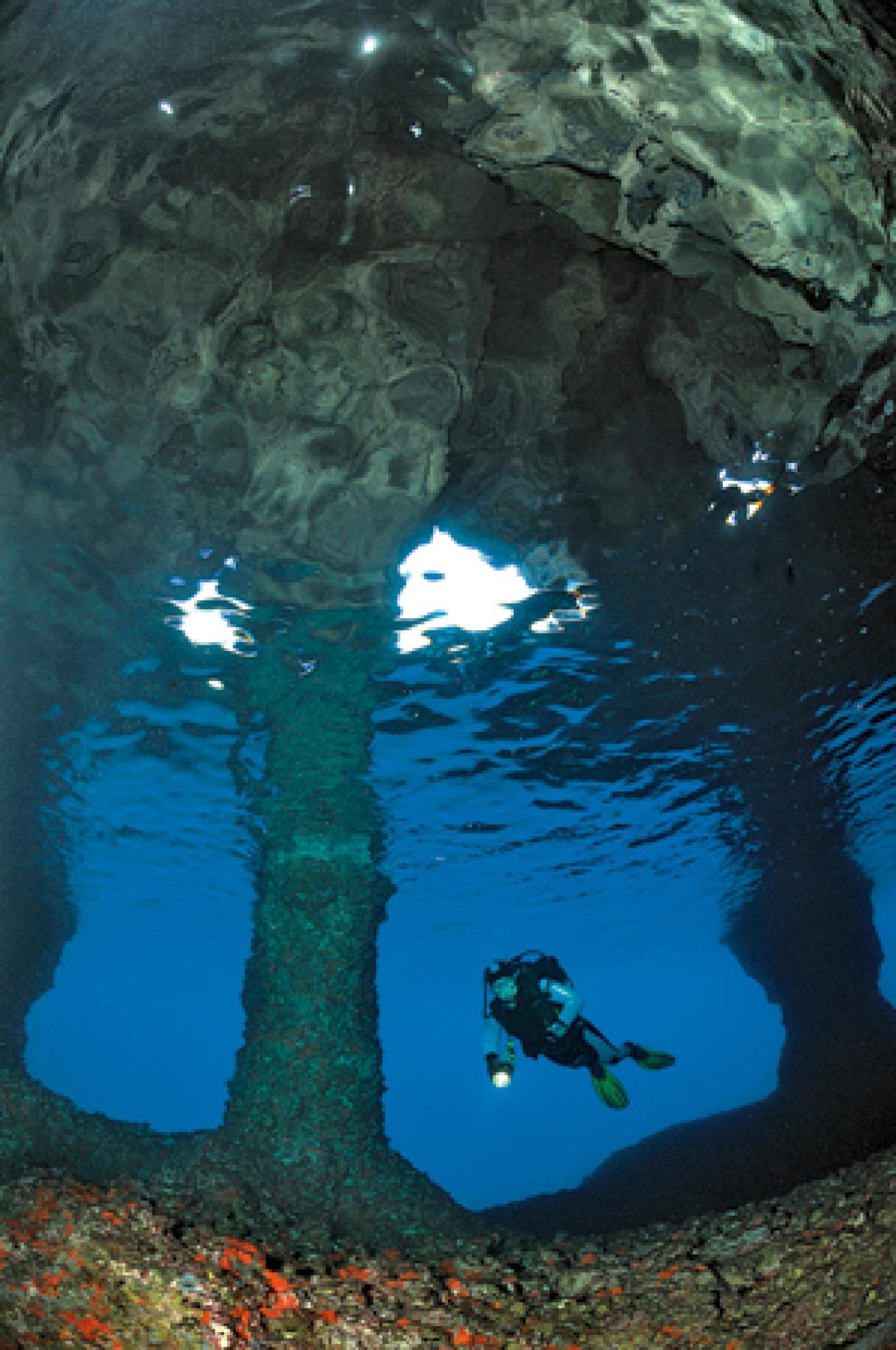The Islands of Croatia

Text & Photography by Borut Furlan
Diving in Croatia? You're probably thinking, You've gotta be kidding me. But we're not. We swear it. With its beautiful coastline and collection of 1,000 islands, Croatia offers Adriatic diving at its finest. Summer is the best time to dive in, with temperate waters between 60 and 70 degrees and visibility ranging from 60 to 90 feet.
You'll find subterranean caves, tunnels, canyons, crevices, pillars and arches carved by centuries of erosion. Underwater walls plummet in some locations up to 300 feet. You'll also discover colorful reefs and a macro-life paradise with shrimp, crabs, nudibranchs, flatworms and tunicates.

On night dives, shrimp and crabs crawl from their dwellings to graze on sea fans. Although big fish are rare, with some luck, you can still find dusky grouper and amberjacks.
Diving Croatia's best sites is challenging, as the most spectacular diving areas are remote and accessible only from boats. But with the right dive operator, you can experience the most memorable diving in a protected marine area surrounding four idyllic islands--Vis, Biševo, Svetac and Sušac.

SUŠAC
Its name in Croatian means "dry island," and a staff maintaining a lighthouse and a shepherd with a herd of 200 sheep and a few goats are the only signs of topside life. Underwater, Sušac is probably the most fascinating of the Croatian islands because of its deep underwater cliffs, densely overgrown with Mediterranean gorgonians (see also p. 68). While the gorgonians on other islands are dark red, here they are also in varying shades of yellow and orange. Radiant small fish here, such as dense schools of pink swallowtails, sea perches and anthias, constantly swim over the gorgonians.

BIŠEVO
Around 100 feet and deeper, Biševo's reefs of are densely overgrown with yellow cluster anemones. There's wonderful wildlife, too--lobsters, conger eels and more. The island is best known for its Blue Cave (Modra špilja), which attracts divers from across Europe. Divers enter the cave only by a small boat, which takes them through a narrow, low tunnel into a great hall. The light entering the cavern is filtered by the water and paints the cave in blue. Around noon when the sun reaches its zenith, the cave is at its brightest and most beautiful. Other caves are also open to divers. Two of these are Totac, which can also be explored on a Blue Cave dive, and Kobila, a little more than a half-mile north of Blue Cave.

VIS
This is the largest island of the group, the farthest from the Croatian mainland and where operators run dive trips in Croatia's Adriatic islands. The southern coast of Vis is famous for dozens of underground caves, pockmarked by holes, like Swiss cheese. Rays of sunlight pour inside from the holes in their ceilings. Vis is also a popular site for wreck diving enthusiasts. Many World War I and World War II naval battles were fought in these waters and many violent storms also sank ships. There are a handful of well-preserved wrecks here, within recreational limits. For technical divers, it's possible to explore a wonderfully preserved American B-17 bomber in about 216 feet of water.
SVETAC
Before diving this island, you must know the mysterious aura surrounding it. According to Croatian legend, Svetac was the home of the pirate queen Teuta, who each night bedded a different young man, then the next morning had him thrown off a cliff. Her treasure of gold coins and jewelry is, according to legend, buried somewhere on the island, but hasn't yet been discovered. Fact or myth, Svetac boasts extremely rare black coral not found anywhere else in this region. The cliff off Svetac's northern shore is great for diving underwater caves such as Corno Ploca and Puhera, which used to be home to Mediterranean monk seals. More of these animals now live in neighboring Greece and Turkey, but sometimes appear here, where rare, short sightings are possible.






